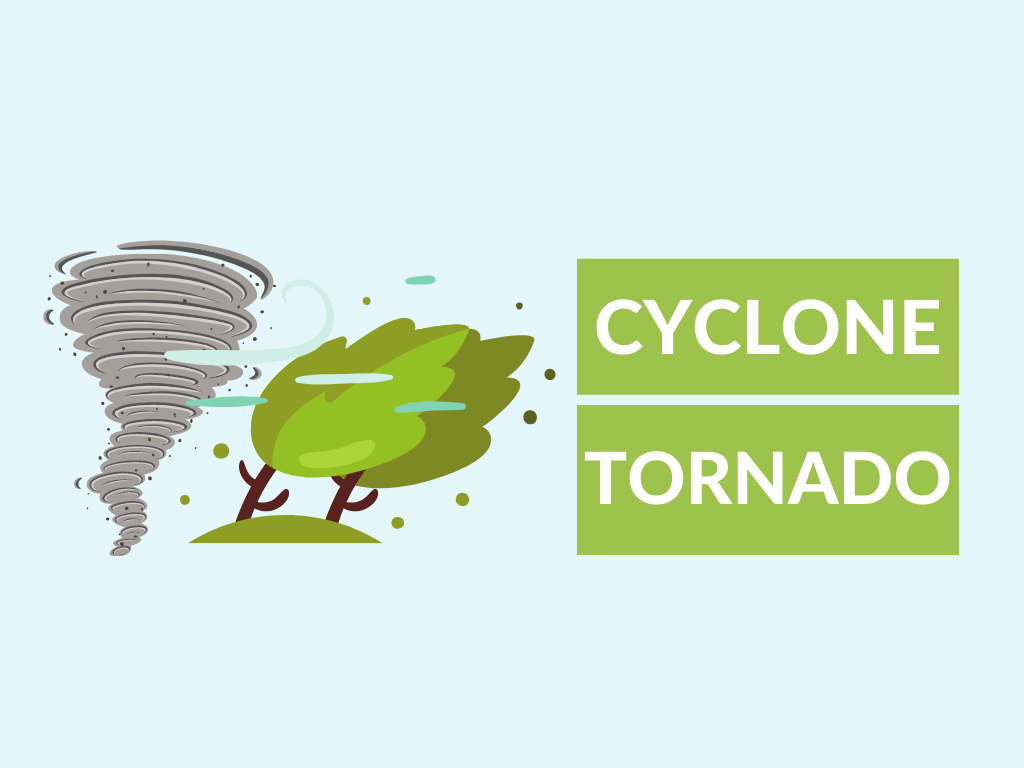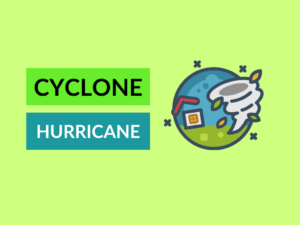In general, we often hear the terms cyclone, tornado, hurricane, typhoons, etc; there is a meaning for every single term and some of the terms are used exchangeably and also have the same meaning but are used differently in the different locations.
Here we are discussing the terms cyclone and tornado that in which it has a different meaning, rotation cycle, frequency, and geographical locations, etc;
In this article, you will know the difference between cyclone and tornado
Cyclone:
A cyclone is “an atmospheric phenomenon characterized by the rapid inward circulation of air masses around a low-pressure core, frequently accompanied by severe and often damaging weather,” according to the definition.
The wind revolving around it is clockwise in the southern hemisphere and counterclockwise in the northern hemisphere. Cyclones can travel at speeds ranging from 32 to 200 kilometers per hour.
Cyclones primarily occur during a specific season and primarily harm coastal locations. There are different types like Polar, polar low, extratropical, subtropical, tropical, and mesocyclones are the six basic types of cyclones.
Tornado:
A tornado is “A rotating column of air ranging in breadth from a few yards to more than a mile and whirling at destructively high speeds, frequently accompanied by a funnel-shaped downward extension of a cumulonimbus cloud,”
Tornadoes that resemble gigantic funnels with a low height and a cylindrical profile are known as “stovepipe” tornadoes, while those that resemble large wedges glued to the ground are known as wedges. Tornadoes can also be a little swirl of dust near the ground that is difficult to spot.
Detection of cyclone and tornado:
Detection of cyclone and tornado are done with Pulse-Doppler radar, photogrammetry, and ground swirl patterns.
Difference between cyclone and tornado:
| Cyclone | Tornado |
|---|---|
| Meaning | |
| It's a large-scale air mass that revolves around a powerful low-pressure center. | It's a destructively high-speed spinning column of air, frequently accompanied by a funnel-shaped downward extension of a thunder cloud. |
| Rotation | |
| Southern hemisphere - clockwise Northern hemisphere - anti-clockwise | Southern hemisphere - clockwise Northern hemisphere - anti-clockwise |
| Measured | |
| Beaufort scale Saffir - Simpson scale | Fujita Enhanced Fujita Torro scale |
| Geographical location | |
| Oceania phenomena | Over-land phenomena |
| Frequency | |
| There are 10- 15 cyclones per year, | Tornadoes are more common in the spring and fall, and less so in the winter. When compared with other countries, the Netherlands records the highest. The US records about 1200 per year of tornadoes. |
Bottom line:
As a result of the preceding discussion, the difference and similarities between cyclone and tornado both are stormy weather systems with the ability to cause damage. Except for Antarctica, tornadoes have been spotted on every continent.
Further related readings:





